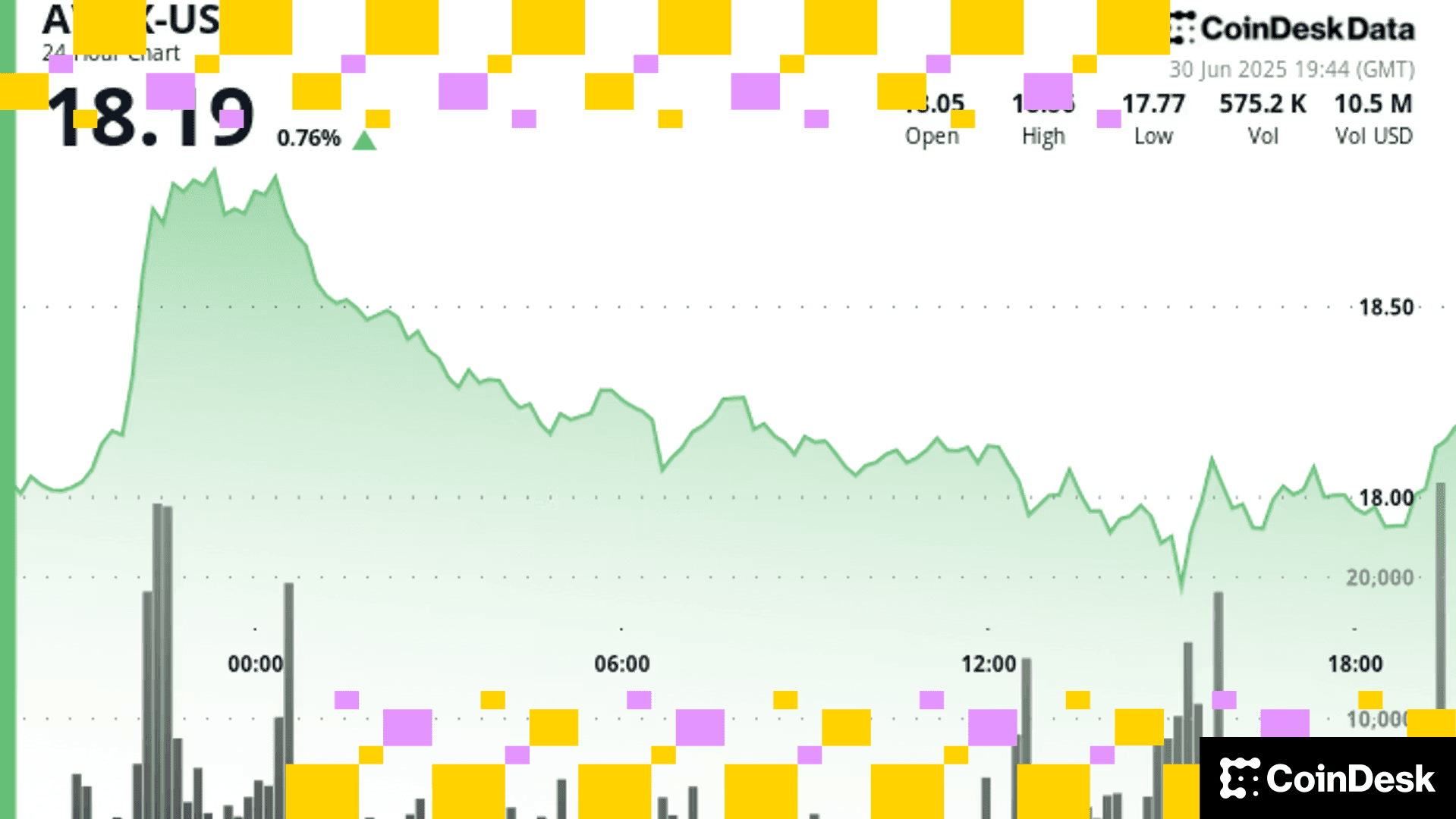Binance CEO Distances Himself From BUSD Stablecoin as Regulators Act
Changpeng Zhao said Binance will continue working with other stablecoin issuers, and that he’s skeptical about claims Circle raised alarm bells with regulators.
Binance Chief Executive Officer Changpeng Zhao distanced himself from the Binance-branded stablecoin BUSD after U.S. regulatory action caused minting to cease.
On Monday, BUSD issuer Paxos said it would stop minting new tokens following a request from the New York Department of Financial Services (NYDFS), but denied regulators’ claims the cryptocurrency, pegged to the value of the U.S. dollar, constituted an unregistered security.
“BUSD is not issued by Binance,” Zhao said during a Twitter Spaces on Tuesday. “We have an agreement to let them [Paxos] use our brand, but that's not something that we created.”
“With BUSD gone, BUSD slowly winding down over time, we will will continue to work with more stablecoin issuers or creators,” Zhao added, citing existing support for other stablecoins such as USD coin (USDC) and tether (USDT).
Zhao also hit out at claims, reported by Bloomberg, that rival stablecoin issuer Circle had sounded the alarm with NYDFS over concerns that Binance did not have enough reserves to back up BUSD tokens.
“I don't really believe Circle would do that – I don't think a professional industry peer will want to do that to another industry peer,” he said. “It just hurts the overall industry as we're seeing now ... I wouldn't take that article too seriously right now.”
Read more: Paxos ‘Categorically Disagrees’ With SEC That BUSD Is a Security, Says It Will Litigate if Needed
More For You
Exchange Review - March 2025

CoinDesk Data's monthly Exchange Review captures the key developments within the cryptocurrency exchange market. The report includes analyses that relate to exchange volumes, crypto derivatives trading, market segmentation by fees, fiat trading, and more.
What to know:
Trading activity softened in March as market uncertainty grew amid escalating tariff tensions between the U.S. and global trading partners. Centralized exchanges recorded their lowest combined trading volume since October, declining 6.24% to $6.79tn. This marked the third consecutive monthly decline across both market segments, with spot trading volume falling 14.1% to $1.98tn and derivatives trading slipping 2.56% to $4.81tn.
- Trading Volumes Decline for Third Consecutive Month: Combined spot and derivatives trading volume on centralized exchanges fell by 6.24% to $6.79tn in March 2025, reaching the lowest level since October. Both spot and derivatives markets recorded their third consecutive monthly decline, falling 14.1% and 2.56% to $1.98tn and $4.81tn respectively.
- Institutional Crypto Trading Volume on CME Falls 23.5%: In March, total derivatives trading volume on the CME exchange fell by 23.5% to $175bn, the lowest monthly volume since October 2024. CME's market share among derivatives exchanges dropped from 4.63% to 3.64%, suggesting declining institutional interest amid current macroeconomic conditions.
- Bybit Spot Market Share Slides in March: Spot trading volume on Bybit fell by 52.1% to $81.1bn in March, coinciding with decreased trading activity following the hack of the exchange's cold wallets in February. Bybit's spot market share dropped from 7.35% to 4.10%, its lowest since July 2023.
More For You












